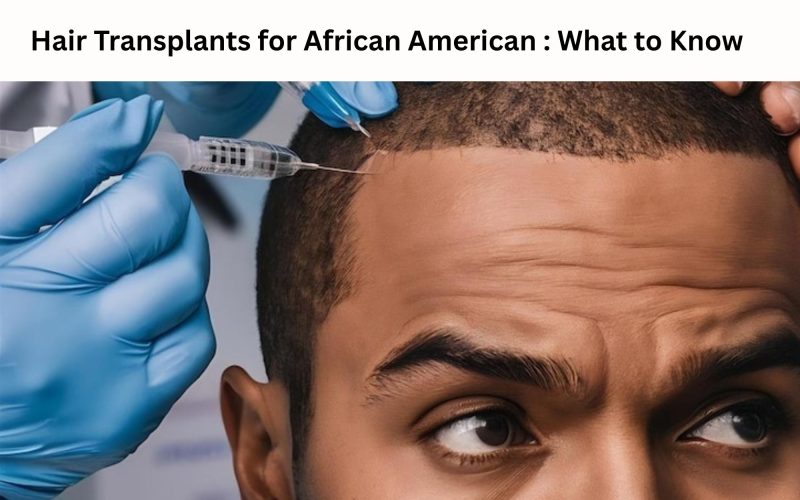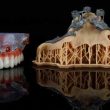Hair loss affects people from all backgrounds, but when it comes to African American individuals, hair restoration involves a specialized understanding of unique hair textures and growth patterns. In recent years, the demand for African American hair transplant procedures has grown as more people seek effective, long-lasting solutions tailored to their hair type. This has made it essential for medical professionals to deeply understand curly, coiled, and kinky hair textures in order to deliver natural-looking results.
African American hair transplant techniques are not a one-size-fits-all process. This article delves into how hair texture plays a crucial role in these procedures, the challenges involved, and how proper care, technique, and artistry lead to outstanding outcomes. Whether you’re researching for yourself or a loved one, understanding the nuances of African American hair restoration is the first step to achieving satisfying, natural results.
The Importance of Hair Texture in Hair Restoration
Hair texture is perhaps the most significant factor in deciding the success of any hair transplant. African American hair, characterized by tight curls and distinct follicle shapes, offers both advantages and challenges in restoration procedures. Each follicle is curved beneath the scalp, creating a naturally dense appearance when transplanted correctly.
This density, while a benefit, also presents difficulties in extraction and implantation. The curliness can lead to higher transection rates (cutting the follicle during extraction), which must be minimized to maintain graft survival. Surgeons need specialized training and tools to accommodate the unique structure of the hair and scalp.
Choosing the Right Transplant Method
When it comes to African American hair transplant procedures, two primary methods are used:
1. Follicular Unit Extraction (FUE)
FUE involves the removal of unique follicular units using a small punch tool. This technique is less invasive and goes minimal scarring. However, with African American hair, the curved follicles increase the risk of transection. For success, the surgeon must angle the tool precisely and use smaller punch sizes tailored to textured hair.
2. Follicular Unit Transplantation (FUT)
Also known as the strip method, FUT involves removing a strip of scalp from the donor area, dissecting it into individual follicular units under a microscope, and implanting them in the recipient area. For African American patients, FUT may offer a higher yield of viable grafts since the follicles can be isolated with greater care under magnification.
The decision between FUE and FUT depends on different factors such as hair type, scalp condition, donor hair availability, and patient goals. Each method has its pros and cons, and a personalized evaluation is essential.
Graft Survival and Density Goals
Due to the unique texture of African American hair, less graft density is often required to achieve a natural look. Curly and coiled hair covers more surface area per strand, creating an appearance of fullness even with fewer follicles. This allows surgeons to be more conservative with donor harvesting, preserving future options.
Proper graft handling is vital to ensure survival. The grafts must be kept hydrated, cool, and handled delicately to prevent trauma. Technicians experienced in textured hair are essential for sorting and implanting follicles efficiently.
Designing a Natural Hairline for African American Patients
One of the most critical aspects of a successful hair transplant is hairline design. For African American patients, the hairline must match the individual’s natural growth pattern, facial symmetry, and ethnic aesthetics.
Rather than straight lines or uniform shapes, natural African American hairlines often have subtle curves and slight irregularities that must be mimicked. This attention to detail ensures that the results appear organic and harmonize with the patient’s features.
Post-Transplant Care and Recovery
Post-operative care is key to the conquest of African American hair transplants. Due to the potential for keloid scarring in some individuals with darker skin tones, close monitoring is required. Proper wound care, avoiding excessive tension, and using gentle hair products support optimal healing.
The transplanted hair will initially shed during the first few weeks, a normal part of the cycle. Regrowth typically starts within three to four months, with full results seen between 9–12 months. Patients must be educated on gentle styling, avoiding heat damage, and maintaining scalp hydration.
Challenges Unique to African American Hair Transplants
Some specific challenges that arise in African American hair restoration include:
- Higher Risk of Follicle Transection: Due to the curved follicles.
- Thicker Scalp Tissue: Can make extraction and implantation more difficult.
- Keloid Formation: A risk factor in individuals with darker skin types.
- Limited Donor Supply: Because of curl density, fewer grafts may be required but must be harvested with high precision.
Achieving Long-Term Results: Maintenance and Support
While a successful African American hair transplant can yield long-lasting results, ongoing hair care is essential to protect your investment. Some helpful practices include:
- Regular moisturizing to combat dryness.
- Low-manipulation hairstyles to reduce tension and breakage.
- Nutritional support for hair growth (biotin, iron, zinc).
- Scalp massages to encourage circulation.
Periodic check-ins with your restoration specialist also help monitor growth and suggest additional treatments like PRP therapy or low-level laser therapy if needed.
Innovations in Textured Hair Restoration
Hair restoration continues to evolve, with new tools and techniques making it safer and more effective for African American patients. These advancements include:
- Customized punch tools for curved follicles.
- Robotic-assisted devices with better depth control.
- Enhanced imaging for follicle mapping.
- Improved magnification for dissecting follicles in FUT.
Conclusion: Celebrating the Beauty of Texture in Restoration
Understanding hair texture in African American hair transplant procedures is fundamental to achieving authentic, natural, and lasting results. The complexity of curl patterns, follicle shapes, and scalp characteristics demands expert care, advanced techniques, and cultural sensitivity.
The journey to hair restoration is not just a medical process—it’s a personal transformation. With the right knowledge, tools, and expertise, individuals with textured hair can experience life-changing results that honor their natural beauty and restore confidence.












